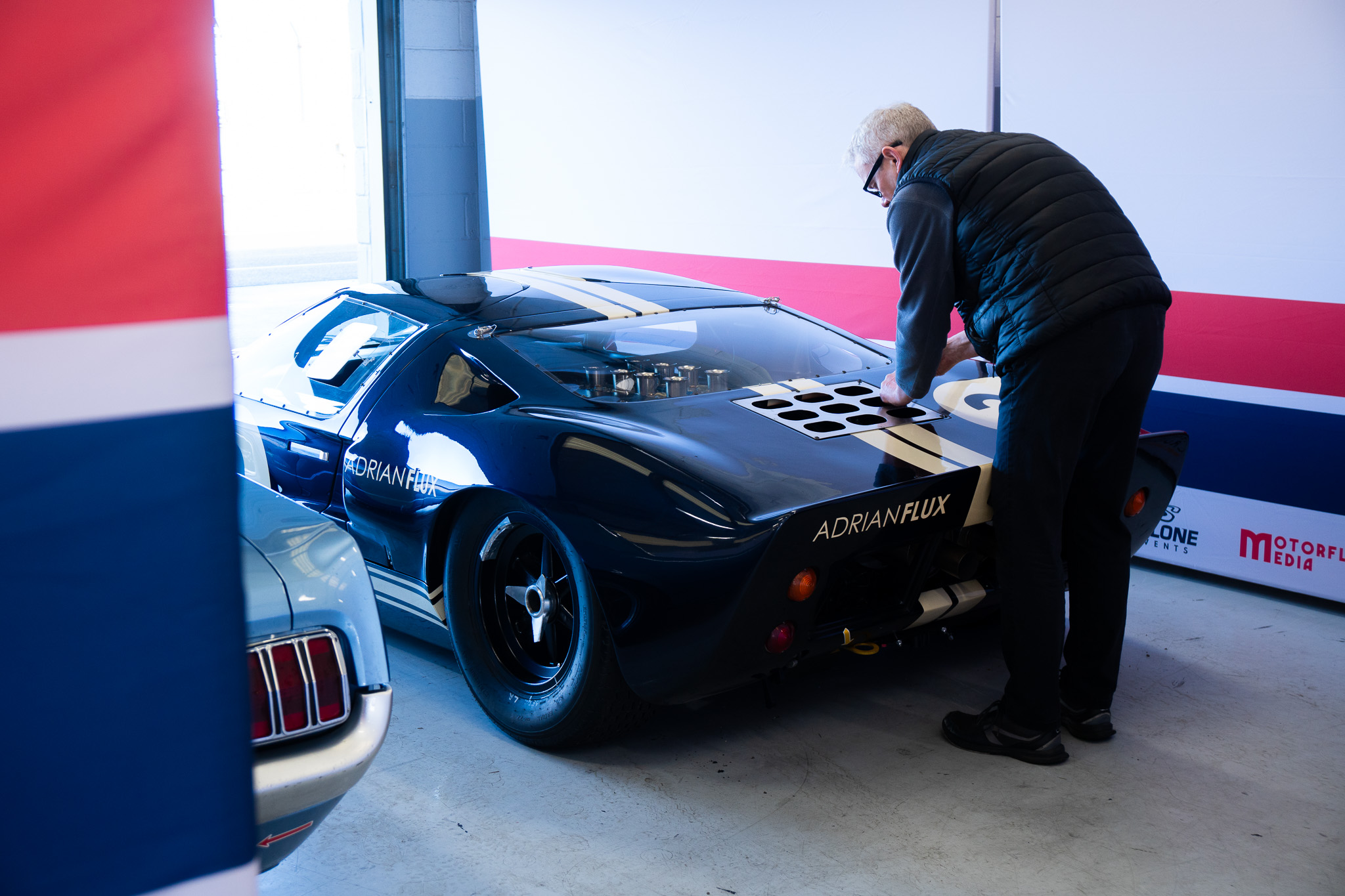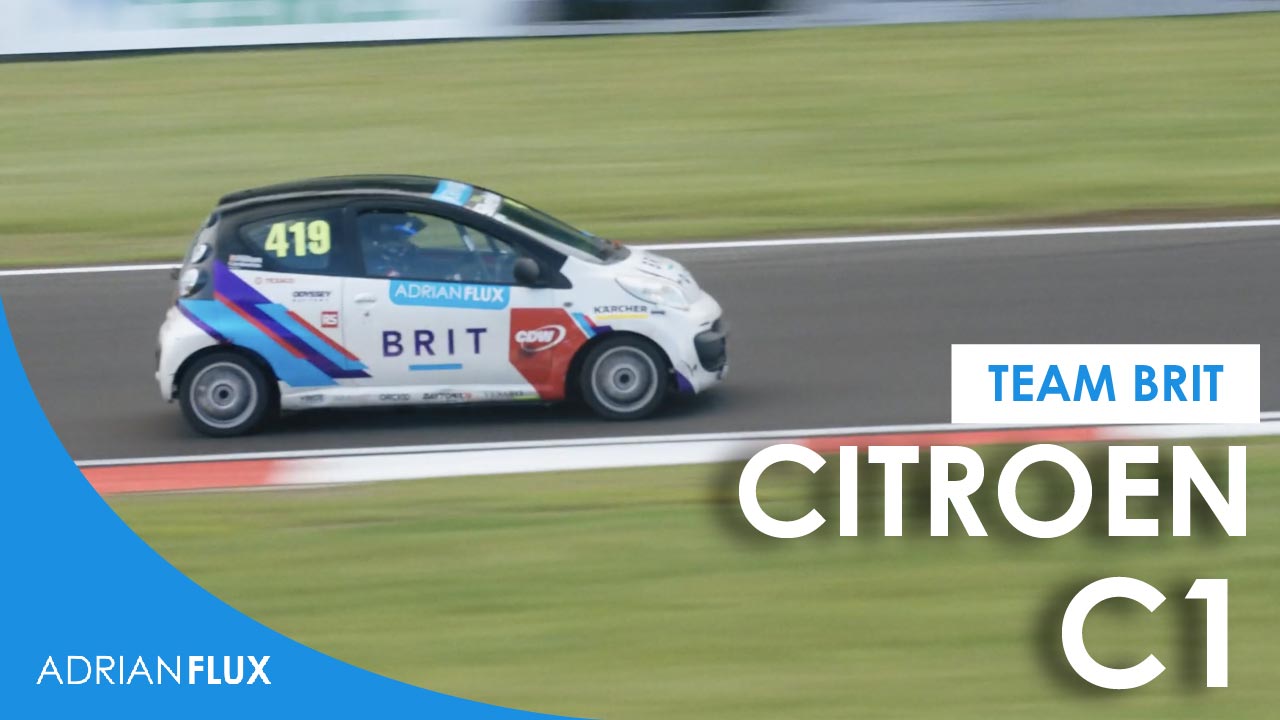Advancements in technology continue to make the world a more inclusive place for people who have a disability.
A handful of adaptations and modifications existed in cars for disabled drivers and now they’ve made their way into motorsport so it’s possible for even more people to go racing.
As companies and individuals continue to push the boundaries, getting behind the wheel will only become easier – especially as disabled car adaptations become more mainstream and cost effective.
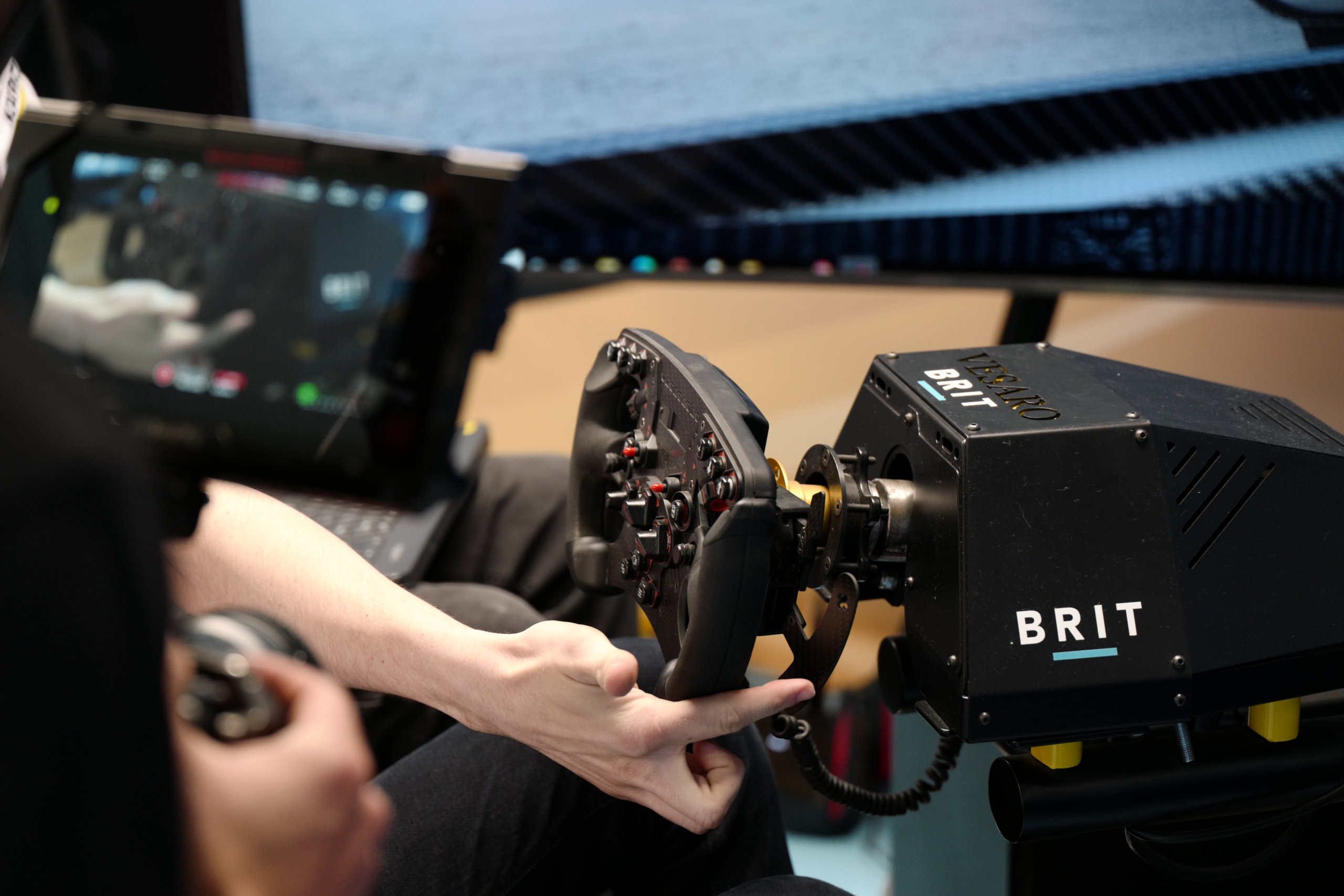
The Team BRIT simulator displaying the hand controls drivers get used to. Picture: JUSTIN HAST
Hand controls for disabled racing drivers
Team principal Dave Player knows more than a thing or two about modifications in motorsport. The Team BRIT chief is involved in the Adrian Flux-sponsored all-disabled racing collective that is refusing to let disabilities get in the way of driver’s racing dreams.
Here he explains, in his own words, the different types of hand controls that are available for disabled racing drivers.
1. Push-pull hand controls
These are low tech, low cost and are exactly like the type of controls that are fitted on everyday road cars. Push-pull hand controls use a lever system that is bolted onto the steering column that you push to brake and pull to accelerate and cost around £300-£1,000 to purchase.
They are perfect for motorsport as a leisure activity but not for a competitive racing team or driver because you need to keep one hand on the wheel and use the other for shifting gears rather than speeding up or slowing down.
2. Guidosimplex hand controls
Created by an Italian company, this ring system allows you to accelerate using the top part and brake by moving the bottom – or vice versa.
Like push-pull controls, you’ll see these in road cars but they are also used by some racing drivers. The question again is how do you shift gears? Unfortunately, you have to remove a hand from the wheel to shift which is something of a disadvantage.
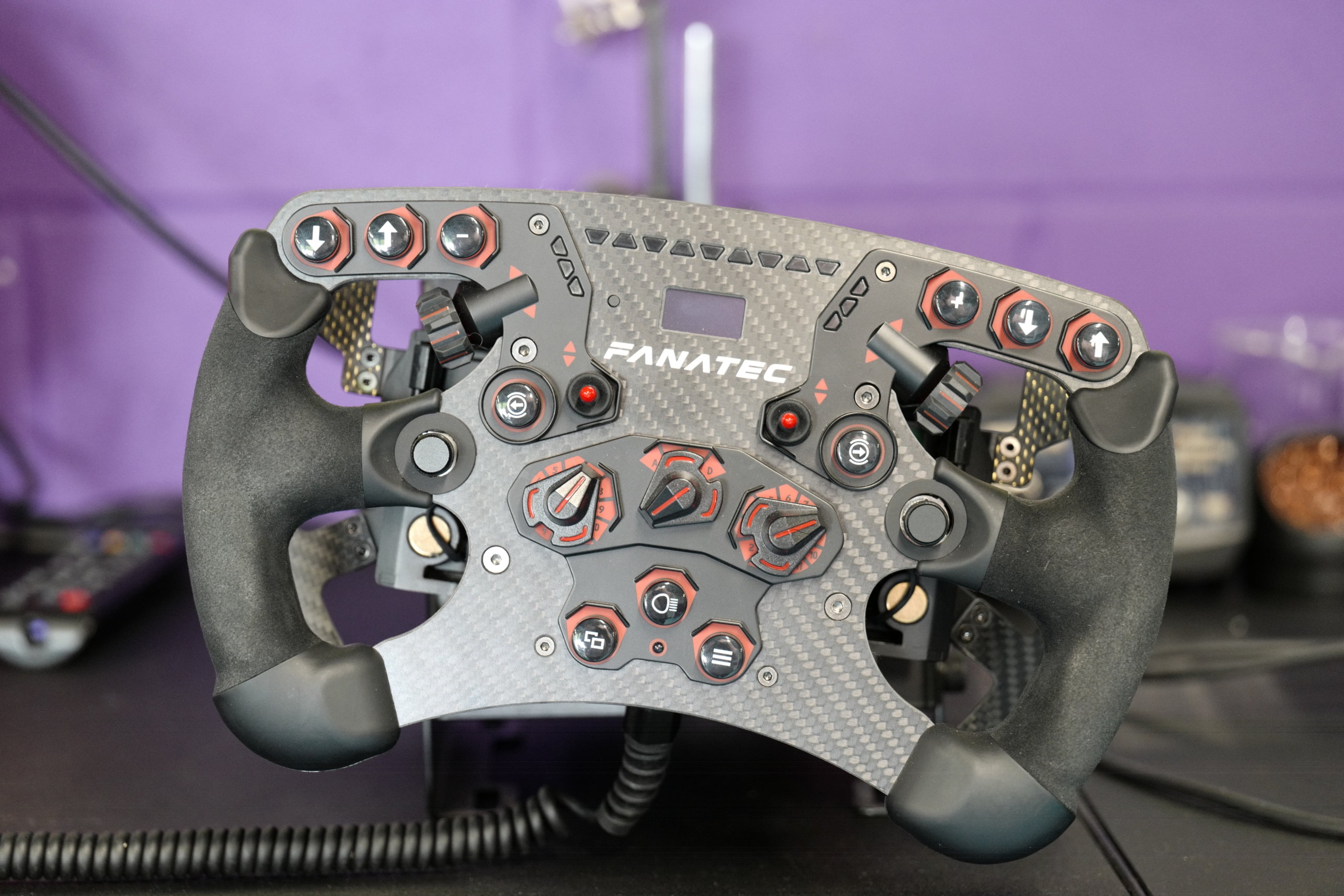
Team BRIT hand controls are the height of modern technology. Picture: JUSTIN HAST
3. Team BRIT hand controls
Almost any disability can use Team BRIT hand controls because they are the world’s most advanced option and allow disabled drivers to race on equal terms with able-bodied competitors.
They’re very similar to the controls that took paraplegic Robert Wickens back to the winner’s circle. The right-hand paddle operates the throttle, the left operates the brake, and you shift gears using your thumb.
They’re recognised by the FIA and cost around £7,500 but they are incredible pieces of kit that really let disabled drivers be as competitive as they can be.
4. Using your head
Sam Schmidt broke his back in a horrific IndyCar accident in 2000. It’s a miracle he’s still alive, let alone driving. But being a quadriplegic hasn’t stopped him from racing because he’s helped develop a car that allows him to steer using his head.
He accelerates and brakes by blowing into and sucking air from a tube – it really is amazing, even if you wouldn’t want to sneeze! It may not become a mass market option but it really is a genius invention.
Disability and motorsport: The other types of common adaptations
By their very nature, modifications must be personalised to the driver to help overcome their impairment. Two other examples are listed below:
- Lightweight seat insert: A ‘bean bag’-like polystyrene ball that moulds around the body to support the driver. Used for amputees, paralysed drivers, and those suffering from hip displacement issues
- Two-door cars: With openings much wider than a four-door alternative, one with half as many entrances can make it more practical for disabled drivers to get in and out of the vehicle
There are many other minor tweaks that can be made to facilitate a disabled driver operating a car, with plenty of other tweaks in the process of becoming a reality. One such area is technology that allows deaf drivers to communicate with the pits using a series of buttons and an LED screen to read messages from the pits.
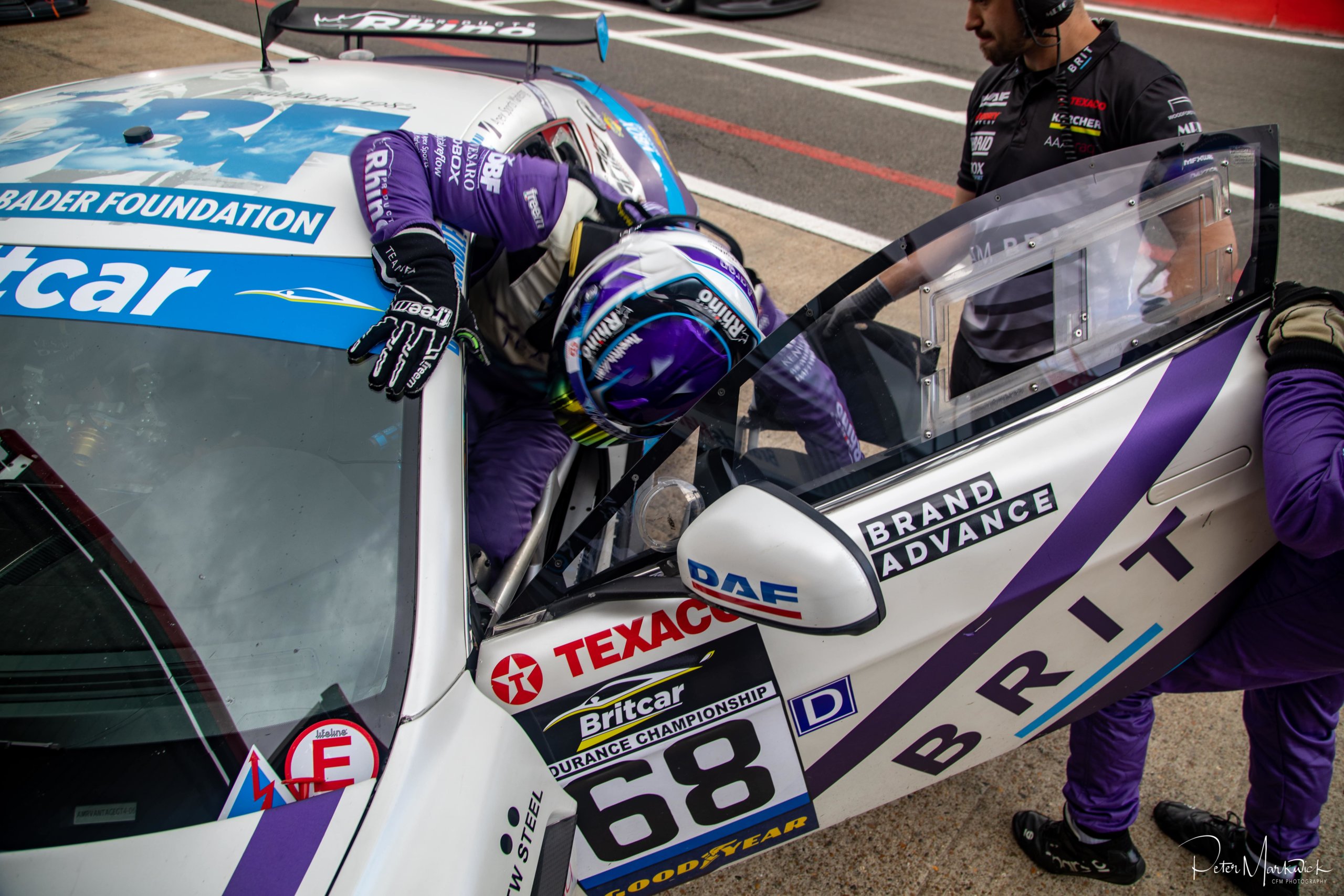
A Team BRIT drivers takes advantage of his car’s wider doors to enter the vehicle. Picture: PETER MARWICK
Are you a disabled driver who loves to drive?
You might not be looking to channel your inner Team BRIT anytime soon, but Adrian Flux understands the difficulties disabled drivers can face when it comes to insuring their cars. After all, it’s the very issue that helped create the company over 45 years ago.
We’re passionate about providing insurance for the individual, so look no further to find out what disabled driver insurance cover we can provide to meet your needs.

